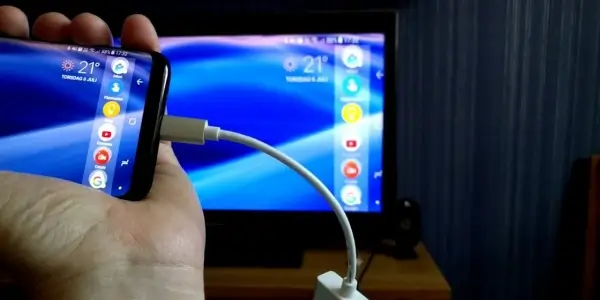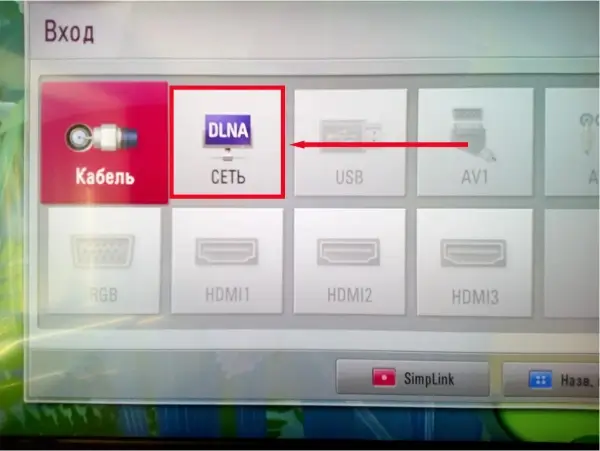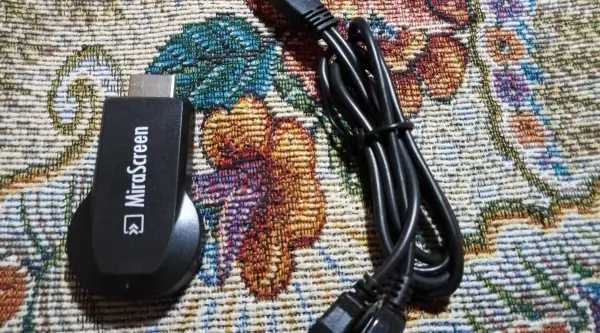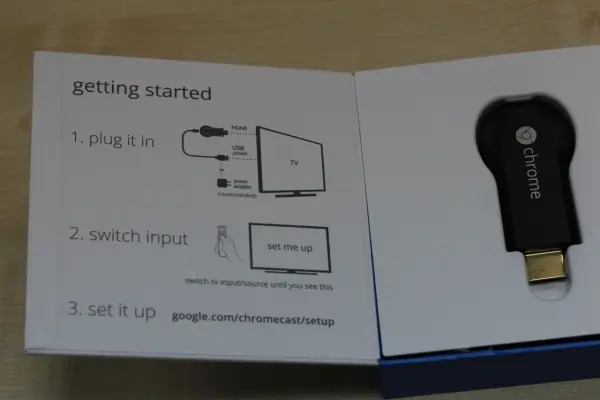How to connect a smartphone to a television
There are several ways to connect a smartphone to a modern television. Some of them are considered outdated, as they do not allow using all the capabilities of smartphones and tablets, while others are relevant for daily use. Let's start with the outdated options.
Method #1 - USB Cable
The simplest way to connect an Android smartphone to a TV. Currently considered the least relevant. After connecting, only media files stored on the smartphone's internal storage can be displayed on the TV. Other device functions will not be available.
To connect, you will need a standard USB cable or a USB Type-C to USB 3.0 adapter. To connect the smartphone, you need to:
- Connect the cable to the TV and the smartphone in the appropriate way, thus establishing a connection between them.
- Using the TV remote, go to the "Source" section.
- Select USB as the signal source.
- The image should appear automatically, but if it doesn't, you need to go to "Settings" on the mobile device, go to the "Connection" section, and select "File Transfer".
- The joystick on the remote control is used to select displayed folders and files.
It is important to understand that the setup process may vary slightly for different TV manufacturers. The suggested sequence is fully relevant for Samsung TVs.
Method #2 - Wi-Fi Direct
Wi-Fi Direct is a feature that allows you to establish a connection (wireless network) between devices equipped with built-in Wi-Fi modules. In this case, routers and access points are not required. This method is quite old and is rarely used at the moment due to limitations in file transfer and a limited set of available functions.
Connecting a smartphone to a TV via Wi-Fi Direct is done as follows:
- On the TV, go to the "Settings" menu, then the "Network" section or similar, and enable the Wi-Fi Direct feature.
- On the smartphone, go to "Settings", then the "Network and Internet" section, Wi-Fi settings, and then "Advanced settings" or similar, and enable the Wi-Fi Direct function.
- The smartphone will scan for nearby devices with Wi-Fi Direct enabled and display a list of devices, from which you need to select the TV.
- The TV and smartphone will pair, after which it will be possible to play media files from the mobile device.
Method #3 - HDMI Cable
The most popular way to connect a smartphone to a TV. To implement it, you need either an HDMI - USB Type-C cable, or an HDMI - USB Type-C adapter, or a full-fledged HDMI - HDMI cable. The version of the HDMI cable will only affect the quality of the transmitted image.
To connect, you need to connect the smartphone and the TV using an HDMI cable. Then, use the remote control to go to the "Source" menu on the TV and select the "HDMI" source with the specified port number. The image from the smartphone will be automatically displayed on the TV screen.
Method #4 - DLNA
The DLNA standard allows for the exchange of images, videos, and music between two compatible devices using a home network via Ethernet or Wi-Fi. This technology has one significant disadvantage, similar to Wi-Fi Direct, which is the ability to play only media content stored on the smartphone. It will be impossible to listen to music through popular apps or watch videos on YouTube.
To connect the phone to the TV via DLNA, you will need to:
- Establish a connection between the TV and the home Wi-Fi router. Similarly, establish a connection with the smartphone.
- On the TV, go to the network settings and select the DLNA function.
- Install the BubbleUPnP for DLNA/Chromecast app from the Google Play Store or another trusted source. The app needs to be granted access to the internal storage.
- In the installed app on the smartphone, tap the "Select renderer" icon in the bottom right corner of the screen. A menu will open, from which you need to select the TV.
- To transmit the image to the TV, select the media file displayed in the program and tap "Play".
With BubbleUPnP for DLNA/Chromecast, you can open/close access to any folder on the smartphone's internal storage. It also allows you to connect cloud storages such as Google Drive, Dropbox, and OneDrive.
Method #5 - Miracast
Miracast is a wireless information transfer standard developed based on Wi-Fi Direct. It allows for the transmission of signal in the ITU-T H.264 format between two devices: a receiver and a transmitter. It also supports the transfer of audio files in LPCM and Dolby AC3 systems. Compatible devices must have the "Wi-Fi Display test plan" certificate.
Connecting a smartphone to a TV using the Miracast technology is done as follows:
- On TVs that support Smart TV technology, open the connection settings and enable Miracast. On Samsung TVs, the function is activated in the "Source" menu, and on LG TVs, it is activated in "Settings" -> "Network".
- On the smartphone, go to "Settings", then the "Display/Screen" section, and select the "Wireless display" function or similar.
- After that, the smartphone will check for devices capable of receiving the signal. To pair, tap on the TV in the displayed list.
If the TV does not support the technology, you can purchase a Miracast adapter. It connects to any available HDMI port and is activated through the "Source" menu using the remote control. To pair, scan the displayed QR code on the TV screen using the app or the smartphone's camera.
Method #6 - Chromecast
Chromecast is a special network media player developed by Google in 2013. It is designed to play various content transmitted over Wi-Fi between a smartphone and a TV.
It is a direct counterpart to Apple's technology, with the only difference being that it requires purchasing a TV dongle, which costs around 2,500 rubles. There is a kit consisting of a dongle and a remote control, with an average cost at the time of writing the material being 7,500-8,000 rubles.
To connect a smartphone to a TV using Google Chromecast, you need to:
- Connect the dongle to the TV's HDMI port. Connect the dongle to a power source using a USB cable.
- On the TV, go to "Sources/Source", select the HDMI port to which the Chromecast dongle is connected.
- In the dongle's menu, perform the Wi-Fi network connection.
- On the smartphone, download the Google Home app from the Google Play Store.
- After installation, open the app and enter personal information for authorization. Then, perform the initial setup.
- Using the app, select the available content and tap on the "Cast" -> "Chromecast" button.
The Chromecast technology allows for full screen mirroring of the smartphone, viewing any media content, playing games, etc. For 4K TVs, there is a special version of the dongle called Google Chromecast Ultra.
Method #7 - AirPlay
AirPlay is a protocol for wireless media content transfer between Apple devices. Therefore, it will not work with Android-based devices. It works on a similar principle to similar technologies on Android smartphones.
Which Method is the Best
First and foremost, you need to determine which type of connection is preferable in your case. If you are not bothered by the presence of a long cable, then the simplest method of connecting a smartphone to a TV is using an HDMI cable. This connection can be set up quickly, the cable itself is relatively inexpensive, and it can be easily replaced if lost or damaged.
If wireless connectivity is required, then the optimal choice in terms of cost-to-features ratio would be to use Google Chromecast technology. You will need to spend money on purchasing the dongle, which is the only drawback. The dongle is easy to connect, and you can continue using it even when you change your TV.
Connections via USB cable and Wi-Fi Direct are outdated and do not provide the desired level of functionality. The Miracast technology also has its limitations, but it works better than Wi-Fi Direct.





